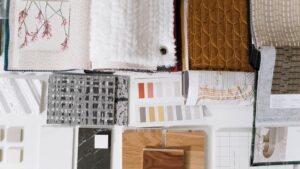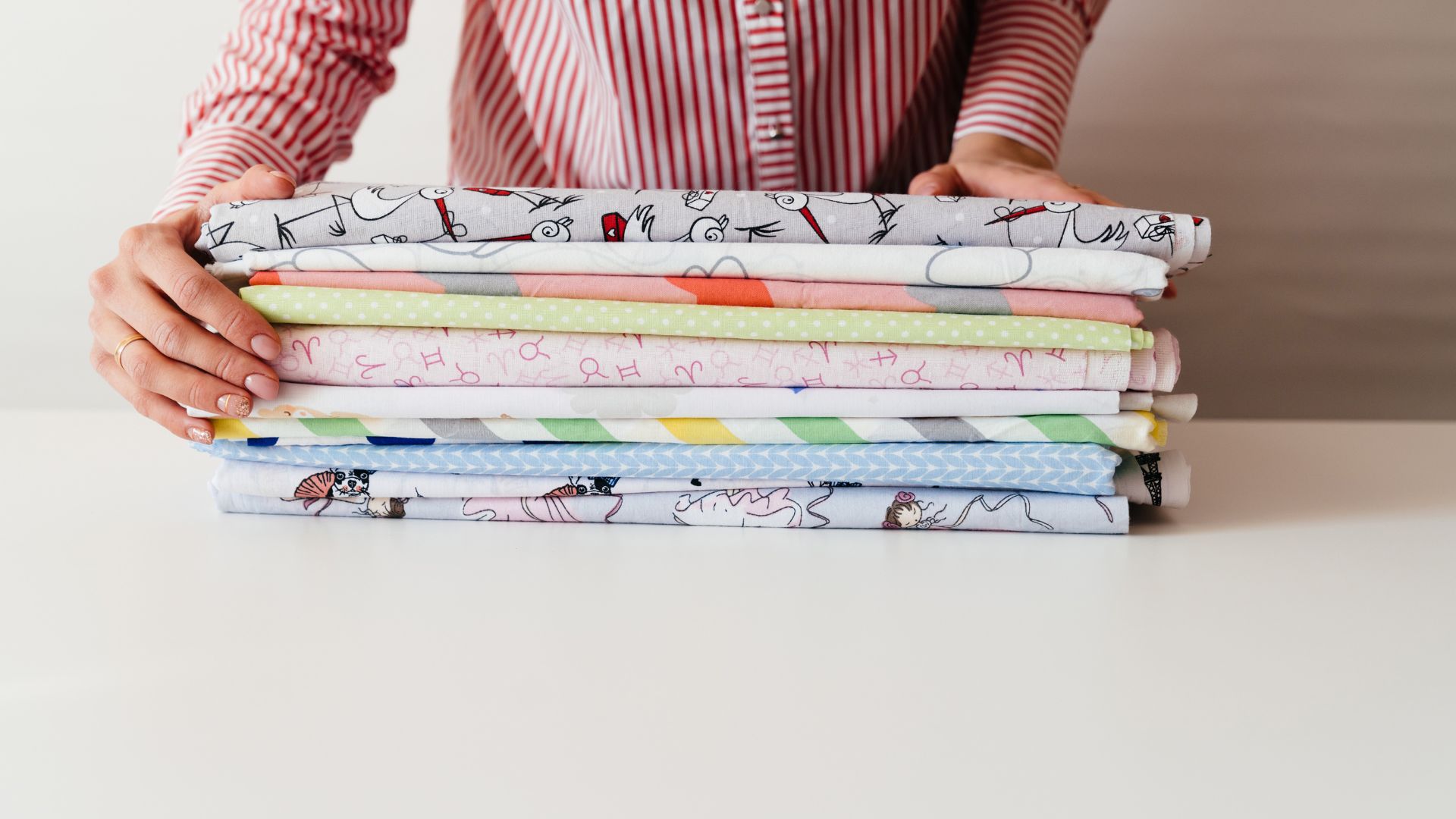Absolutely, you can mix different types of fabric in a quilt! This opens up a world of creative possibilities and adds depth and texture to your project. Mixing fabrics not only creates visual interest but also allows you to play with various textures, weights, and patterns, resulting in a unique and personalized quilt.
Understanding Fabric Types
When combining different fabrics in a quilt, it’s essential to understand the characteristics of each type. Fabrics can vary in texture, weight, stretch, and weave, among other properties. Some common fabric types used in quilting include:
Cotton
Cotton is a popular choice for quilting due to its durability, breathability, and ease of handling. It comes in various weights and prints, making it versatile for different quilt designs.
Linen
Linen adds a beautiful texture to quilts and often has a more rustic or natural appearance. It’s slightly heavier than cotton and adds a lovely tactile quality to your quilt.
Silk
Silk fabrics bring elegance and a luxurious feel to quilts. While it may be a bit more challenging to work with due to its delicate nature, silk can add a stunning touch as an accent fabric or in small quilt sections.

Wool
Wool fabrics offer warmth and coziness to quilts. They can be used in colder climates or for specific design elements, providing both texture and insulation.
Blends and Specialty Fabrics
Blending different materials, such as cotton-polyester blends or specialty fabrics like batiks or denim, can also add visual interest and unique characteristics to your quilt.
Tips for Mixing Fabrics in Quilts
Consider Color and Pattern
When mixing fabrics, pay attention to color coordination and patterns. Combining complementary or contrasting colors can create a visually appealing quilt. Experiment with different patterns, from florals to geometric designs, to achieve the desired look.
Test Fabric Compatibility
Before starting your quilt, consider pre-washing the fabrics, especially if they are of different types or weights. This helps prevent uneven shrinkage or color bleeding later on. Also, test the fabrics together to ensure they work well in terms of stretch, stability, and sewing ease.
Use Interfacing or Stabilizers
For fabrics that might be challenging to work with or have different stretch properties, using interfacing or stabilizers can help maintain consistency while quilting.
So,…
Mixing different types of fabric in a quilt is a fantastic way to express your creativity and create a unique piece. Understanding the properties of each fabric type, considering color and pattern combinations, and testing compatibility are key steps to achieve a harmonious and visually stunning quilt.
External Resources:
Moving forward
Let’s delve deeper into the exciting world of mixing fabric in quilts.
Design Elements to Enhance Your Quilt
Texture Play
Mixing various fabric textures can add depth and visual interest to your quilt. Combining smooth cotton with textured linen or incorporating lace, velvet, or even denim patches can create a tactile masterpiece.
Appliqué and Embellishments
Using different fabrics for appliqué or embellishments can make specific quilt blocks or motifs stand out. Consider incorporating sequins, beads, or embroidery on a contrasting fabric to add a touch of glamour.
Focus on Borders and Binding
Borders and binding offer opportunities to showcase your fabric mixing skills. Using a different fabric for the borders or experimenting with a scrappy binding can frame your quilt beautifully.
Quilt Backing
The backing of your quilt is another canvas for creativity. Mixing fabrics for the quilt back can add an element of surprise when the quilt is turned over. Consider using a complementary or contrasting fabric to the quilt top for added intrigue.
Techniques for Working with Different Fabrics
Sorting and Organizing
Organize your fabrics based on type, weight, and stretch. This helps maintain consistency while piecing your quilt and makes it easier to work with different materials.
Needle and Thread Selection
Using the right needle and thread for each fabric type is crucial. For instance, finer needles work better for delicate fabrics like silk, while heavier needles are suitable for denser materials like denim or wool.
Adjusting Sewing Techniques
Adapting your sewing techniques to suit different fabrics can improve your quilting experience. Adjusting stitch length, using appropriate presser foot attachments, and employing different seam allowances can ensure smoother quilting with various materials.
Conclusion
Mixing different fabric types in a quilt allows you to showcase your creativity, experiment with textures, and create a one-of-a-kind masterpiece. By understanding fabric properties, focusing on design elements, and employing suitable techniques, you can craft a visually stunning and unique quilt that reflects your personal style.
Remember, the joy of quilting comes from experimentation and discovering what works best for you. So, gather your fabrics, explore different combinations, and embark on a quilting adventure that celebrates your creativity!
External Resources:
Comparison tabular on this
| Aspect | Consideration |
|---|---|
| Fabric Types | Cotton, Linen, Silk, Wool, Blends, Specialty Fabrics |
| Texture Play | Experiment with smooth cotton, textured linen, lace, velvet, denim patches, adding tactile diversity. |
| Appliqué & Embellishments | Use various fabrics for appliqué or embellishments like sequins, beads, or embroidery. |
| Borders & Binding | Showcase fabric mixing skills in borders or scrappy bindings to frame the quilt attractively. |
| Quilt Backing | Surprise by using a complementary or contrasting fabric for the quilt back. |
| Sorting & Organizing | Organize fabrics by type, weight, stretch for consistency and ease of use. |
| Needle & Thread Selection | Use appropriate needles and threads for different fabric types (e.g., finer needles for silk). |
| Sewing Techniques | Adapt techniques like stitch length, presser foot, seam allowances for different fabric properties. |
This table offers a quick comparison of various considerations when mixing fabric types in quilts, helping you focus on key aspects while working on your quilting project.
Wrapping up
So, dive into your fabric stash, explore new combinations, and let your creativity soar. Whether you’re aiming for a cozy, rustic quilt with linen accents or a vibrant, elegant piece with silk and embellishments, enjoy the process and celebrate the beauty of diversity in your quilt-making adventure.
Remember, there are no rules set in stone just your imagination guiding you through this wonderful and fulfilling quilting experience. Happy quilting.

For over a decade, I’ve been Mike, an artist, crafter, and designer deeply immersed in the Croc world. I thrive on crafting unique, size-inclusive patterns, fostering creativity, and sharing them on ktforum.com. My designs aim to ignite your creative spark and delight you, ensuring clarity and ease of use through rigorous testing. Join me in expressing your creative flair and showcasing your craft with joy.
Related Posts
- Preventing Fabric Bleeding in Your Quilt: A Comprehensive Guide
Quilting is a cherished craft, but the fear of fabric bleeding can dampen the joy…
- How do you make a quilt label
Creating a quilt label is a fantastic way to add a personal touch and tell…
- Can you use old clothing to make a quilt
Absolutely, you can transform old clothing into a beautiful and sentimental quilt! It's a fantastic…
- Choosing the Perfect Fabric for Your Quilts
Quilting is an art form that brings together creativity, skill, and a touch of warmth.…

